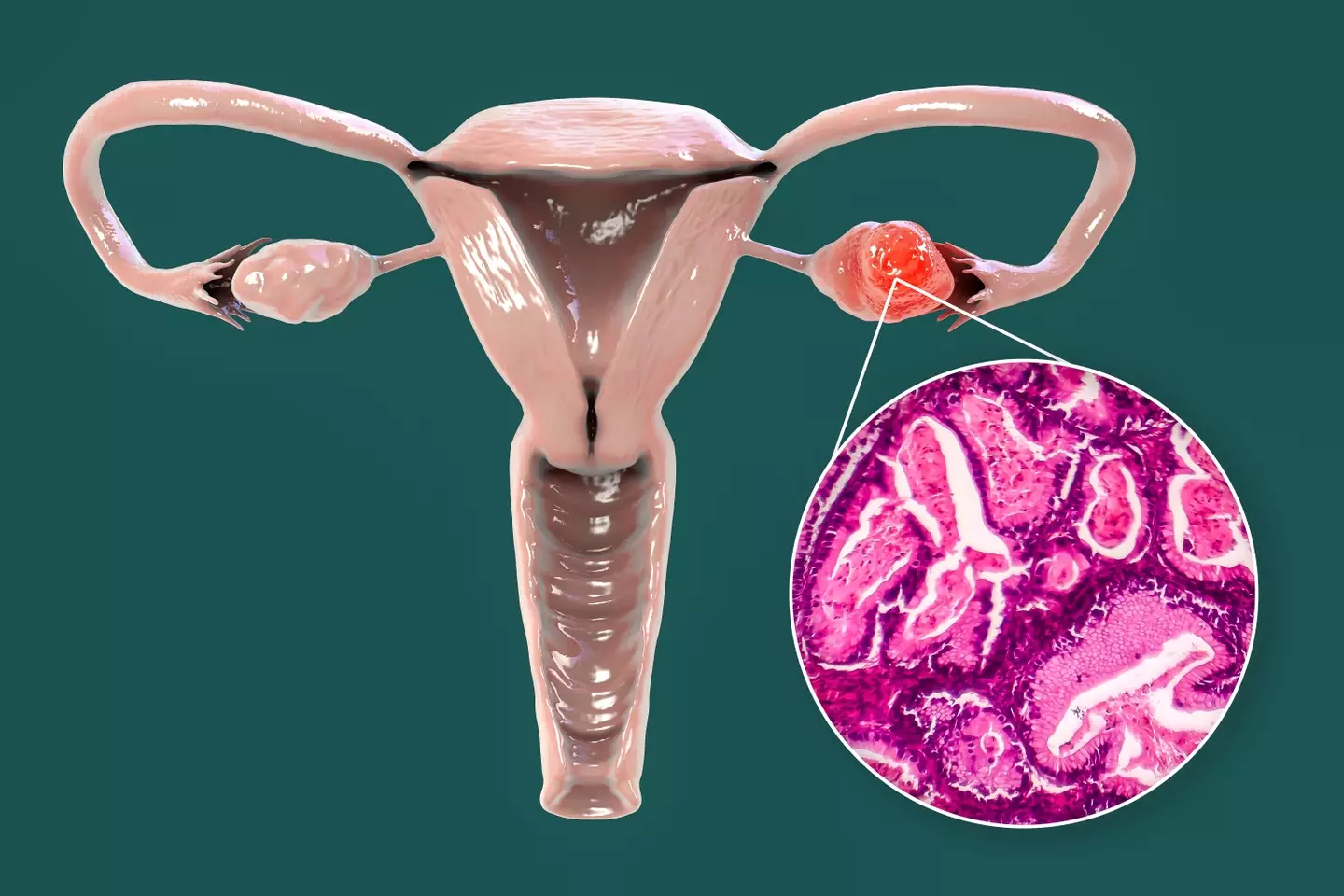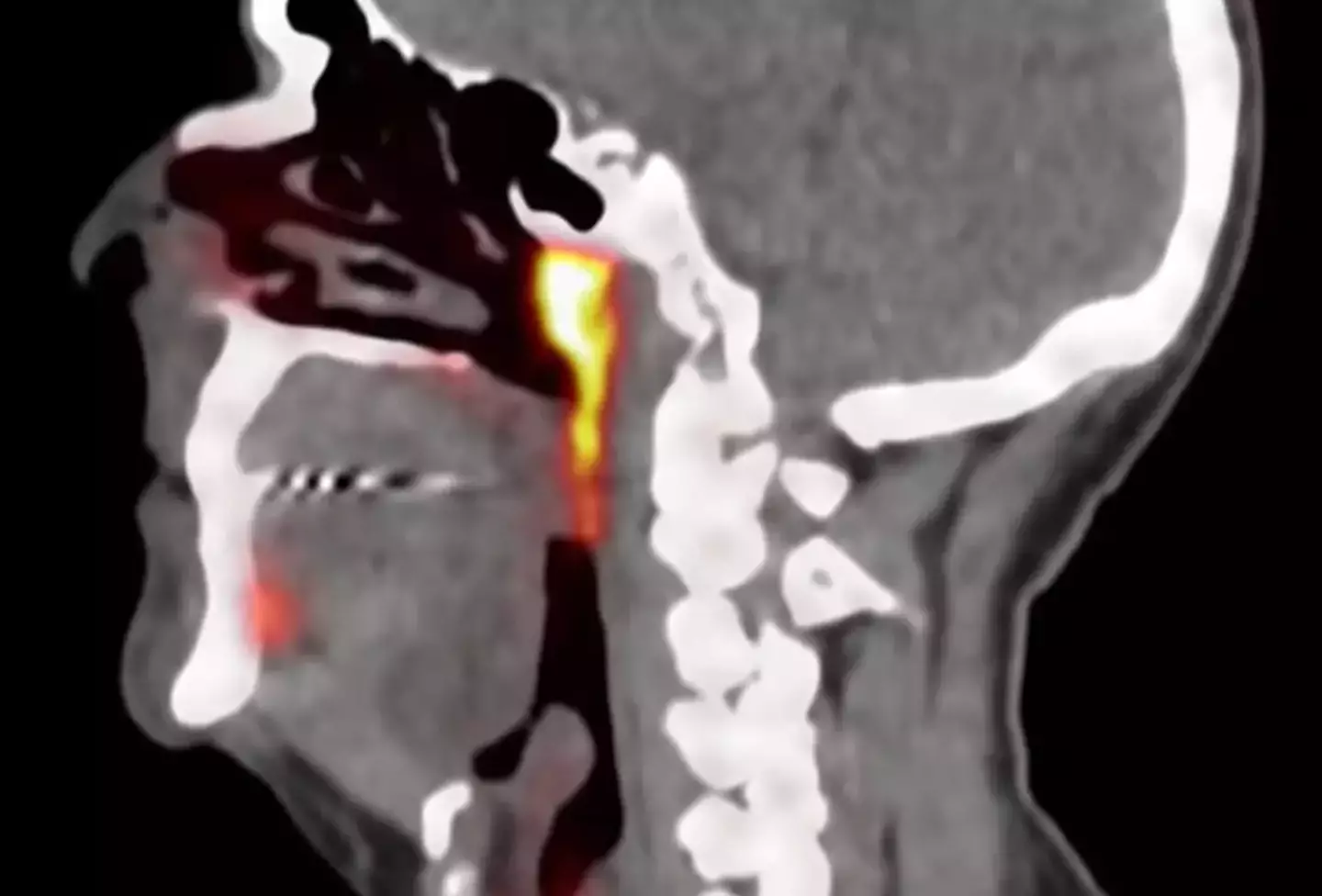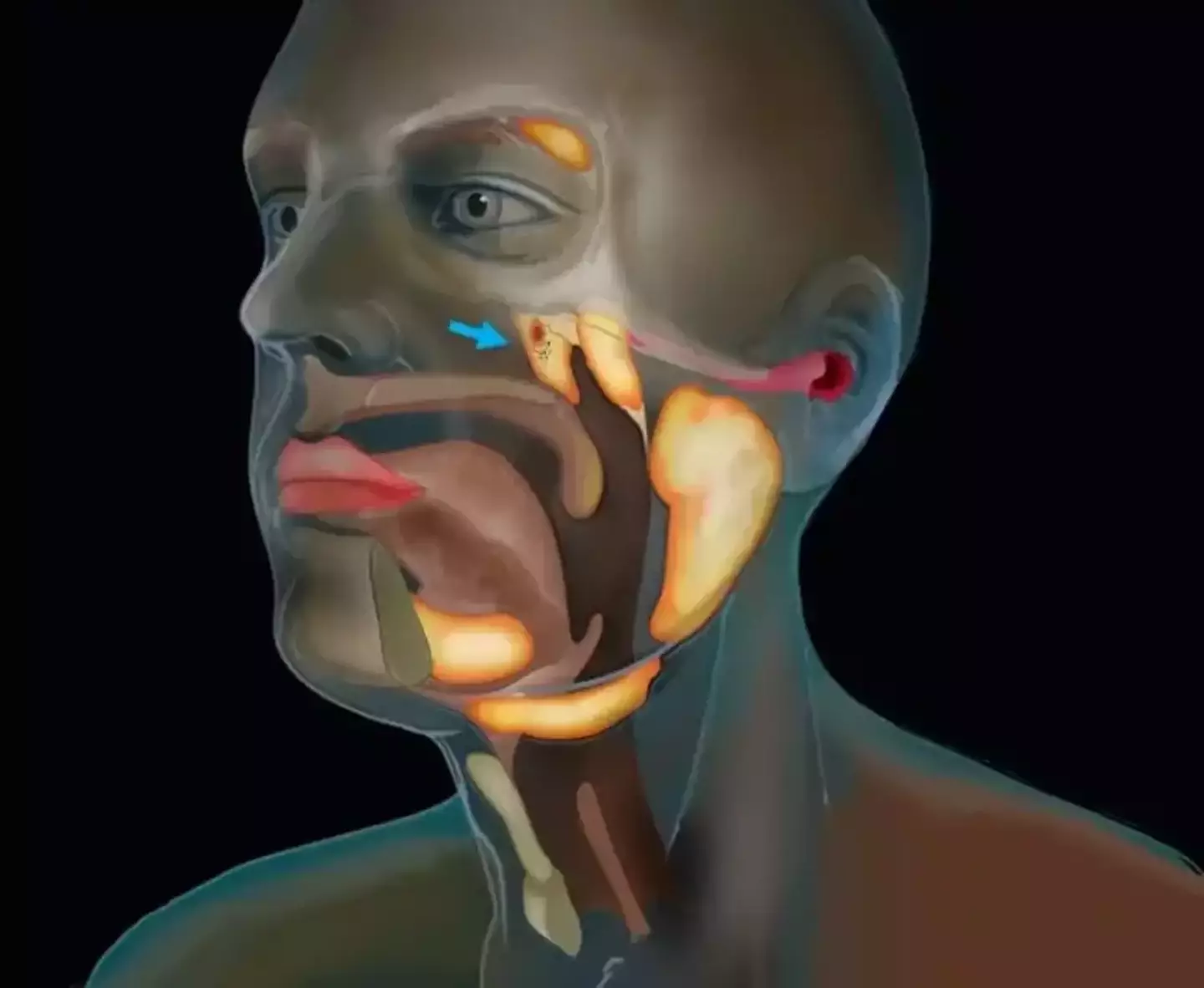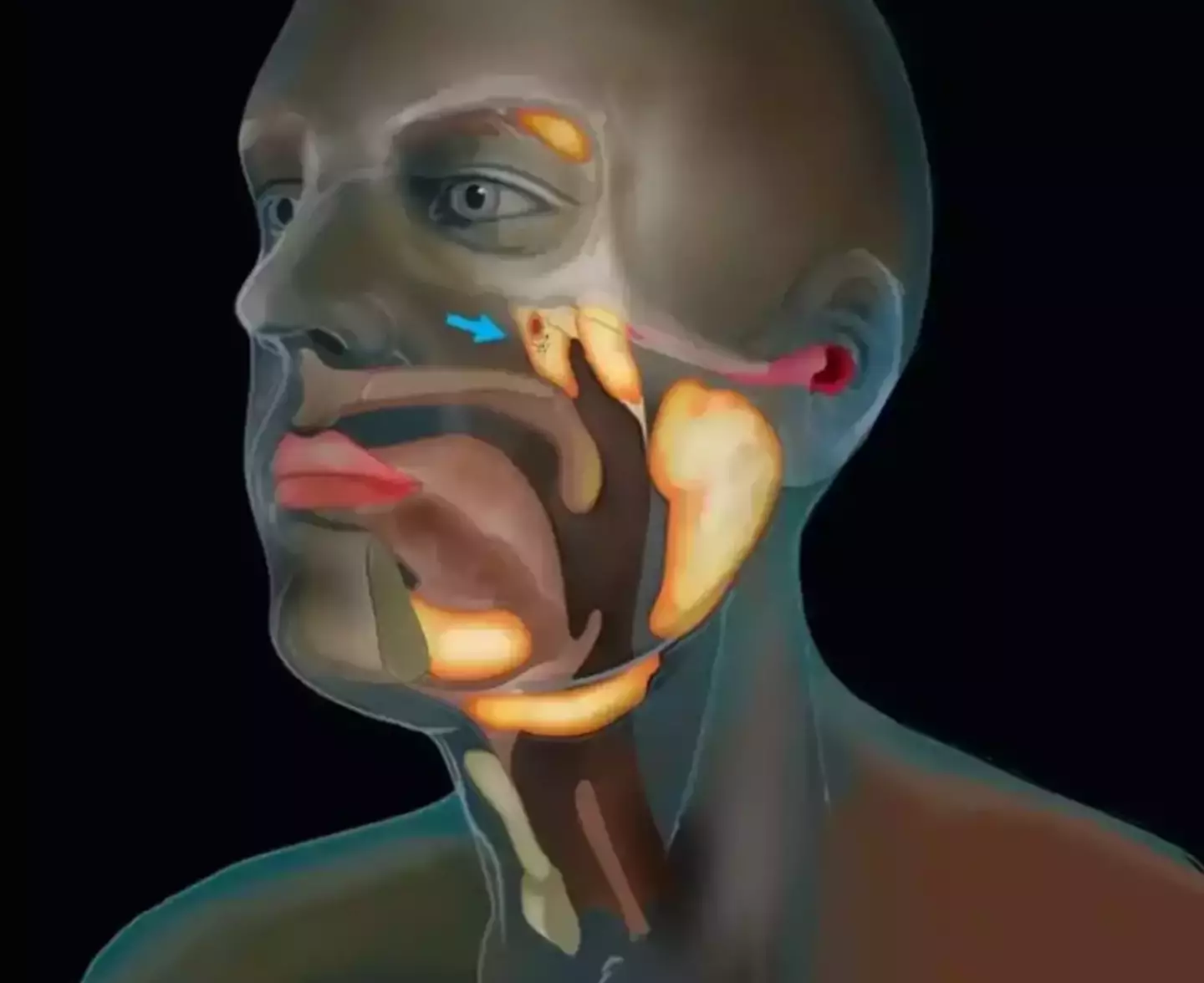Scientists at the University of Oxford are developing the world’s first ovarian cancer vaccine that has the potential to cure the disease in the future.
There were an estimated 238,484 women living with ovarian cancer in the US in 2021, according to the National Cancer Institute.
As such, a vaccine for the disease could save so many lives and help so many families across the world.
And the first ever ovarian cancer vaccine is being developed in the UK by a team of scientists at the University of Oxford.
Researchers state OvarianVax teaches the immune system to recognise ovarian cancer in its earliest stages and attack it.

Ovarian cancer impacts thousands in the US (Getty Stock Photo)
Best case scenario is the jab ‘could wipe the disease out’, with experts likening it to the human papillomavirus (HPV) vaccine for cervical cancer.
Ahmed Ahmed, lead on the vaccine project, said: “We need better strategies to prevent ovarian cancer. OvarianVax could offer the solution to prevent cancer in women at high risk.
“Teaching the immune system to recognise the very early signs of cancer is a tough challenge. But we now have highly sophisticated tools, which give us real insights into how the immune system recognises ovarian cancer.”
Cancer Research UK, which is funding the project, states researchers will work out which proteins on the surface of early-stage ovarian cancer cells are recognized most by the immune system.
The scientists will then work on how effective the vaccine is at killing organoids in the lab, which are essentially mini-models of ovarian cancer.
Michelle Mitchell, Chief Executive of Cancer Research UK, said: “Projects like OvarianVax are a really important step forward into an exciting future, where cancer is much more preventable.
“This funding will power crucial discoveries in the lab which will realise our ambitions to improve ovarian cancer survival.”

Scientist are working on the vaccine (Getty Stock Photo)
However, expectations have been steadied, with experts warning it will be many years before the vaccine is readily available to people at risk of ovarian cancer.
Nonetheless, if this ongoing research proves successful, the team of scientists will crack on with clinical trials.
Professor Ahmed added: “I am optimistic because we are talking about preventing the very first few cancer cells that develop – and not trying to cure or treat or prevent the tumour coming back.
“I’m hoping that, because the number of cells that we will be targeting is quite small, we will have success.
“We’ve seen success with the HPV vaccine – it’s really, really incredibly effective.”
Featured Image Credit: Monty Rakusen/Magicmine/Getty Images

The ‘most exciting find of the last decade’ is the discovery of ‘hope molecules’, according to one health psychologist.
It turns out there’s a bunch of chemicals which your body can secrete under certain conditions which have been dubbed ‘hope molecules’ – yep, it sounds like something out of Inside Out and I am here for it.
What are ‘hope molecules’ and why they’re so good
Health psychologist, lecturer and author Kelly McGonigal, PhD, explained the ‘hope molecule’ to Rich Roll on his podcast.
She said she came across the term in a scientific paper and questioned why it’s not used more, revealing ‘hope molecules’ are used to refer to a group of small proteins called myokines.
McGonigal explained that our muscles ‘are like an endocrine organ’ and when we ‘contract’ our muscles ‘in any type of movement’ they ‘secrete chemicals into [the] bloodstream’ such as myokines.
And while the chemicals released are ‘really good for every system’ of the body such as ‘heart health’ and ‘immune function’ and some of the them able to ‘kill cancer cells’, a ‘big part of these proteins that are being released by our muscles’ also have a ‘profound effects’ on the brain.

Have you heard of ‘hope molecules’ before? (Getty Images/ Westend61)
How you get ‘hope molecules’
McGonigal continued: “So you go for a walk, or a run or you lift weights and your muscles contract and they excrete these proteins into your blood stream, they travel to your brain and they cross the blood-brain barrier.
“And in your brain they can act as an anti-depressant […] they can make your brain more resilient to stress, they can increase motivation, they help you learn from experience.”
And if you’re sat here questioning whether there’s not some other way to get hold of the same chemicals?
Well, sadly not, with McGonigal adding: “And the only way you get these chemicals is by using your muscles. This is part of how we become our best selves, we have to use our muscles.”
Yes, I’m sorry, going on a run will make you happier – it’s scientifically proven.
But why were myokines nicknamed ‘hope molecules’ – bar the fact it’s probably the most fitting name for them?

Yes, I’m gutted to confirm, running can scientifically benefit your mental health in a way scoffing crisps doesn’t (Getty Images/ Catherine Falls Commerical)
Why they’re called ‘hope molecules’
McGonigal added: “Scientists called them ‘hope molecules’ because in this one study they found exercise could protect rodents from experiencing depression and PTSD if you severely traumatize them so the idea that these molecules are giving you hope even in difficult times.”
McGonigal believes we should ‘frame movement’ as if we’re giving ourselves an ‘intravenous dose of hope’.
She resolved: “It’s something you can choose to do to really powerfully influence your mental health and resilience and every time you move you’re doing that.”
Featured Image Credit: Facebook/Rich Roll/Getty Stock Image
Topics: Health, Mental Health, Science

An ‘internet apocalypse’ could take place leaving the system ‘fried’ for ‘months’, according to a team of researchers.
Solar storms have already occurred in the past, hitting earth and causing disruptions to global communications.
George Mason University in Virginia, and the Naval Research Laboratory are now working together to create an early warning system, concerned an internet cut-out may be pending.
According to Wonderopolis: “Solar storms occur when the Sun emits huge bursts of energy in the form of solar flares and coronal mass ejections.
“These phenomena send a stream of electrical charges and magnetic fields toward the Earth at a speed of about three million miles per hour.”
Professor Peter Becker of George Mason University explained to Fox Weather that there’ve been ‘a lot of (solar) flares’ in the past where the flare has been spotted as a ‘flash’ and then the coronal mass ejection (CME) – the large expulsions of plasma and magnetic field from the Sun’s corona – goes off ‘in some random direction in space’.
However, the CME has also come towards Earth and scientists can predict this to with ‘about 18 hours of warning, maybe 24 hours of warning, before those particles actually get to Earth and start messing with Earth’s magnetic field,’ Prof Becker says.
And it’s happened before too.

Getty Images/ HO/AFP
In 1859, a CME from the sun collided with earth’s magnetosphere resulting in a geomagnetic storm which led to telegraph systems failing – known as the Carrington Event.
Prof Becker recalls: “It actually took out the telegraph system, sparks were literally flying off the telegraph lines.
“Some operators got electrocuted because the wires ended up carrying high voltage, which they were never supposed to do, but the magnetic field variations became so strong it almost became a generator system and drove these currents down telegraph wires.”
And a similar event could take place today – and it’s impact would be even greater given the world’s further developed communications systems.

Getty Images/ Thierry Monasse
Prof Becker warns most people would think their devices – such as computers – are ‘grounded’ so are ‘relatively safe’.
However, ‘if you drive inductive currents to the surface of the Earth, it can almost work backwards, and you can end up actually frying things’, he says.
According to Fox Weather, phones, computers, tablets, radios, GPS systems, ‘underground fiberoptic cable with copper sheaths,’ satellites and the power grid are all vulnerable.
And you could say bye bye to the internet for a while too, with Prof Becker revealing: “You’re talking about something that could really fry the system for a period of several weeks to months in terms of the time it would take to repair all the infrastructure – all of the electronic switches, all of these closets of electronics in all these office buildings.

Getty Images/ Max Fenton/Construction Photography/Avalon
“That could all be fried. So we’re talking pretty major.
“And it’s not just communications. It’s economic disruption, too, obviously.”
Exemplifying just how disruptive this would be, Prof Becker predicts that it would cost the US economy $10-20 billion per day if such an ‘internet apocalypse’ occurred.
I guess it’s just as well researchers are trying to come up with an early warning system then isn’t it?
Prof Becker resolves: “If we have a warning, every minute counts because you can put satellites in safe mode. You can take transformers off-line from the grid, so they don’t fry.
“[…] And then, more long term, you’re talking about hardening the internet. And that’s, of course, an economic challenge because it’s sort of like an insurance policy.
“You may never need it, and it would cost trillions to really harden the system.”
Featured Image Credit: Solar Dynamics Observatory / NASA / Getty stock
Topics: Technology, Space, Science, Phones, Health, Social Media, World News

Given how long humans have been around, and how long we’ve been studied by one another, you’d think we’d have learned just about everything there is to know about our bodies.
Apparently we can still manage to surprise scientists, though, as was the case in 2020 when researchers stumbled upon an entire organ they’d never spotted before.
The unexpected discovery was made by a team in the Netherlands, who weren’t actually attempting to find a new organ, but still managed to find one all the same.
The team were actually studying prostate cancer when they stumbled upon the mysterious sight, which is located just beneath the face.
That’s right; we’ve all been staring at its location this whole time, but just never knew it was there.
At this point, you may be wondering how a team studying prostate cancer ended up discovering an organ in the human head, considering those are two different ends of the body.
Well, it all went down after the scientists at the Netherlands Cancer Institute conducted a series of CT and PET scans on patients who had been injected with radioactive glucose that makes tumours glow on the scans.
As they studied the scans, the team noticed two areas within the heads were lighting up, suggesting a set of salivary glands were tucked away in there.

YouTube/Antoni Van Leeuwenhoek
When they managed to track down the organ, the team gave it the catchy name of the ‘tubarial salivary gland’.
The glands can be found behind the nose; in the nook where the nasal cavity meets the throat, and is designed to ‘lubricate and moisten the area of the throat behind the nose and mouth’.
Experts were understandably baffled at how the glands had managed to go unnoticed for so long, though Dr Wouter Vogel, radiation oncologist at the Netherlands Cancer Institute, had an idea as to how they might have gone unnoticed.
He explained it takes ‘very sensitive imaging’ to spot the glands, and they’re ‘not very accessible’.
“People have three sets of large salivary glands, but not there,” he said.
“As far as we knew, the only salivary or mucous glands in the nasopharynx are microscopically small, and up to 1,000 are evenly spread out throughout the mucosa. So, imagine our surprise when we found these.”

Netherlands Cancer Institute
Though the discovery wasn’t intentional, scientists hope their findings will help cancer patients experience less complications after receiving radiotherapy, as they believe many complications surrounding the treatment are connected to the tubarial salivary glands.
The ‘next step’ is figuring out how not to damage them the organs during radiotherapy treatment, as a ‘single misdirected zap’ could permanently damage the organ, accoridng to Vogel.
If the experts can crack that one, it could result in a significant boost in the quality of life of people who require radiotherapy.
Featured Image Credit: Patrick J. Lynch, medical illustrator/Netherlands Cancer Institute
.webp)
When you think of scientific discoveries, a lot of people’s minds immediately turn to the more outlandish finds.
Like the missing continent of Zealandia or the massive ‘ocean’ beneath Earth’s surface.
However, some of the most impressive scientific discoveries have come from within ourselves.
Given how long we’ve been around, you’d think we’d have learned everything there is to know about the human body.
However in 2020, scientists somehow stumbled upon an entire organ that they’d never actually spotted before.
The team working on the study in the Netherlands were actually studying prostate cancer whey they came across the mysterious organ.

Scientists accidentally discovered the new organ. (YouTube/Antoni Van Leeuwenhoek)
And somehow it’s located just beneath the face, so we’ve been staring at it the whole time.
At this point, you may be wondering how a team studying prostate cancer ended up discovering an organ in the human head, considering those are two different ends of the body.
Well, it all went down after the scientists at the Netherlands Cancer Institute conducted a series of CT and PET scans on patients who had been injected with radioactive glucose that makes tumours glow on the scans.
As they studied the scans, the team noticed two areas within the heads were lighting up, suggesting a set of salivary glands were tucked away in there.
When they managed to track down the organ, the team gave it the catchy name of the ‘tubarial salivary gland’.
The glands can be found behind the nose; in the nook where the nasal cavity meets the throat, and is designed to ‘lubricate and moisten the area of the throat behind the nose and mouth’.

It was found in the face. (Netherlands Cancer Institute)
Experts were understandably baffled at how the glands had managed to go unnoticed for so long, though Dr Wouter Vogel, radiation oncologist at the Netherlands Cancer Institute, had an idea as to how they might have gone unnoticed.
He explained it takes ‘very sensitive imaging’ to spot the glands, and they’re ‘not very accessible’.
“People have three sets of large salivary glands, but not there,” he said.
“As far as we knew, the only salivary or mucous glands in the nasopharynx are microscopically small, and up to 1,000 are evenly spread out throughout the mucosa. So, imagine our surprise when we found these.”
Though the discovery wasn’t intentional, scientists hope their findings will help cancer patients experience less complications after receiving radiotherapy, as they believe many complications surrounding the treatment are connected to the tubarial salivary glands.
Featured Image Credit: Patrick J. Lynch, medical illustrator/Netherlands Cancer Institute



